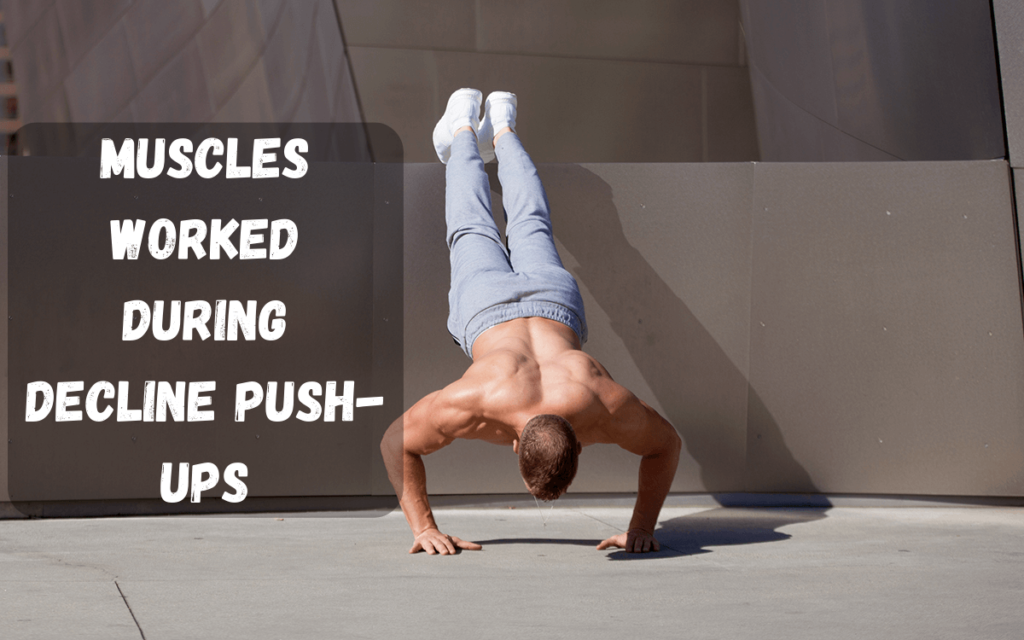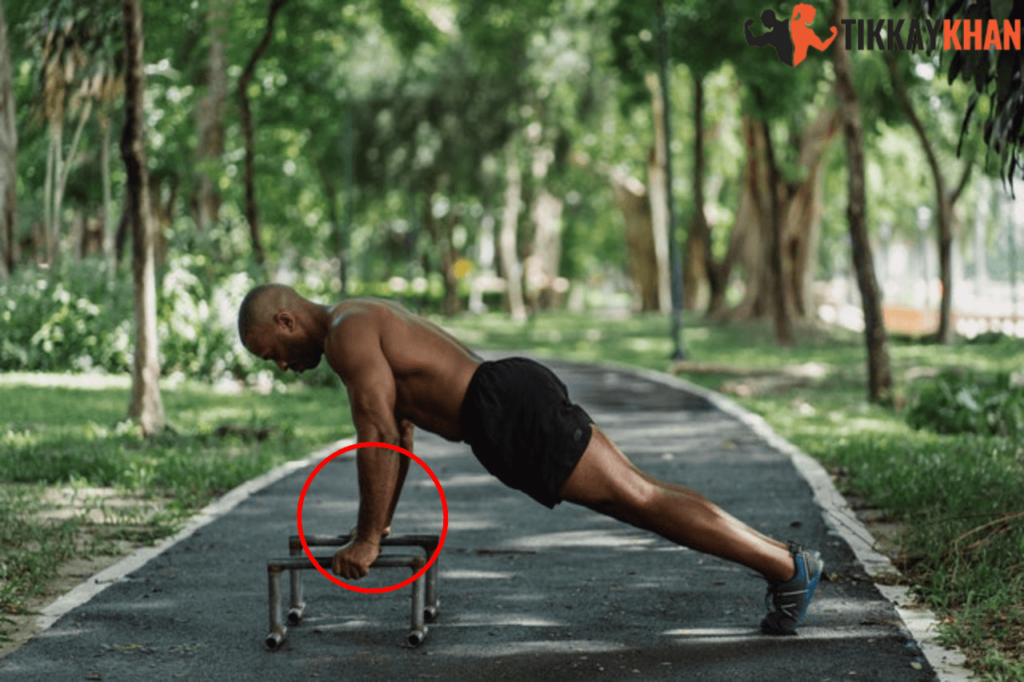Decline push-ups provide a more intense workout than standard push-ups, challenging intermediate and advanced fitness enthusiasts.
Whether you’re looking to build upper body strength or just seeking a powerful full-body workout, decline push-ups can be a valuable addition to your exercise routine.
Decline push-ups are:
- An advanced form of the classic push-up.
- Targeting the upper chest, shoulders, and back.
- Arms.
What Are Decline Push-Ups?

Decline push-ups are a compound strength-training workout that involves raising and lowering your body using your arms while facing down in a prone, horizontal position.
The difference between standard and declined push-ups is the height of your feet relative to your hands.
In a decline push-up, your feet are elevated on a bench or other elevated surface, increasing the difficulty of the exercise and targeting specific muscle groups.
How to Do Decline Push-Ups:
Here is the Step-by-Step Guide to Performing a Decline Push-Up:
- Start by positioning your hands on the floor, slightly wider than shoulder-width apart.
- Place your legs on a bench or a padded roller to elevate your body.
- Using your arms, lift yourself off the ground, straightening your elbows and keeping them close to your body.
- Pause when your elbows are almost fully extended at the movement’s top.
- Slowly lower your body back to the ground, feeling the motion throughout the movement.
- Repeat this movement 8 to 20 times for 3-4 sets.
How to Do a Decline Stability Ball Push-Up:
- Start by lying face-down on a stability ball, with your arms in a push-up position supporting you.
- Roll forward until your pelvis and thighs are off the ball, and place your feet on top of the ball.
- Your hands should be directly beneath your shoulders, forming a straight line from your head to your heels.
- Breathe in as you lower yourself by bending your arms until they form a 90-degree angle.
- Pause for one to two seconds at the bottom, breathe out, and use your arms to push yourself back up to the starting position.
How to Do a Single-Leg Decline Push-Up:
- Start in the same position as a traditional decline push-up.
- Instead of keeping both feet on the step or bench, lift one a few inches in the air.
- Perform the push-up, focusing on stabilizing yourself with your upper body as you lower and raise your body.
Benefits Of Decline Push-Ups:
There are many benefits to regularly doing declined push-ups:
- Improved muscular endurance within the upper body
- Strengthening of both muscles and bones
- Improved performance for athletes
- Increased fat burn and improved metabolism
- A compound exercise that works for multiple muscle groups simultaneously
- Decline push-ups also require no special equipment, making them a convenient and cost-effective exercise option for those looking to build a home gym.
Muscles Worked During Decline Push-Ups

Decline push-ups work several key muscle groups, including the upper chest, anterior deltoids, and triceps.
Secondary muscles, such as the lower chest, lateral deltoid, serratus, and trapezius, are also activated during this exercise. The intensity of the muscle workout will depend on the degree to which you perform the exercise.
Decline Push-Up Variations

Several variations of the decline push-up can help challenge your muscles and keep your workout routine fresh and exciting. Some of the most popular decline push-up variations include:
Diamond Push-Up: Performed with your hands close together in a diamond shape, this variation emphasizes the triceps.
Feet-Elevated Push-Up: Another advanced variation involves placing your feet on a higher elevated surface than your hands.
Close-Grip Push-Up: Close-grip push-ups are performed with your hands close together. This variation emphasizes the triceps and chest.
Common Mistakes to Avoid When Doing Decline Push-Ups
When performing decline push-ups, you must maintain proper form to avoid injury and get the most out of the exercise. Here are some common mistakes to avoid:
Sagging in the Middle
A common mistake during decline push-ups is allowing the midsection to sag, which can lead to back pain. This often occurs when the core needs to be properly braced, and the torso is flexible.
To avoid this, engage your core and maintain a stiff torso. If you experience sagging, it may indicate a lack of core strength. In this case, focus on building your core by incorporating exercises such as the modified plank and easier push-ups.
Improper Neck Alignment

While it’s necessary to tilt your head slightly to achieve a full range of motion during decline pushups, keep your neck in neutral alignment with your spine to avoid neck strain and tilt your head too far up or down.
Hands Too Far Forward

When performing decline pushups, it’s vital to keep your hands under your shoulders to avoid straining your wrist joint. If your hands are too far forward, it can put extra stress on the wrists.
Make sure to lean slightly over your wrists and keep your elbows back behind your shoulders or at a 45-degree angle from your side body.
Conclusion
Decline push-ups are a highly effective exercise that can help to build strength, improve endurance, and target specific muscle groups.
Incorporating decline push-ups into your exercise routine can provide a new challenge and help you reach your fitness goals.
FAQs
Decline pushups are a variation of the traditional pushup exercise that focuses on strengthening the chest, triceps, and shoulders. In this exercise, the feet are elevated above the hands, creating a downward slope that adds resistance to the movement.
Starting with 1-3 sets of 5-8 repetitions of decline pushups is recommended for beginners. You can gradually increase the number of sets and reps as you progress. It’s important to listen to your body and not overdo it, especially starting with this exercise.
Decline push-ups are a great exercise to include in your chest-focused workout. They can be performed at the end of your workout because of their simplicity and resistance.
To build upper body mass and strength, try performing a variety of push-ups, including standard push-ups, incline push-ups, narrow-grip push-ups, pike-ups, and Hindu push-ups.
The decline push-up primarily targets the upper chest muscles, but you will also engage your lower chest, shoulders, triceps, and core muscles.
Start by performing 3-4 sets of 10-20 repetitions of decline push-ups, focusing on maintaining good technique. You can gradually increase the number of repetitions and sets as you progress.